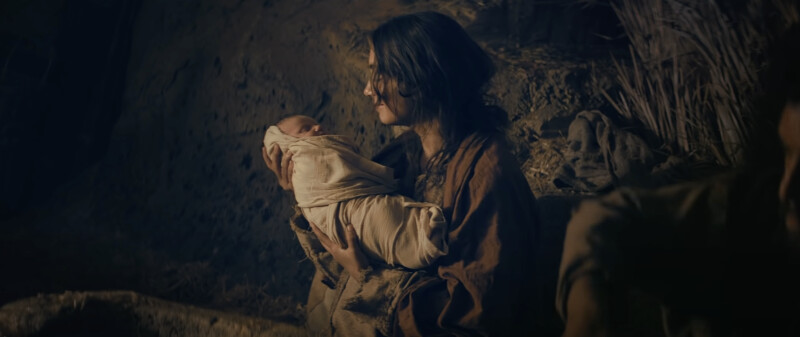This article is part of a series called “12 Days of Christmas: A daily study guide to bring the Savior into the season.” See the full list of days in the study guide and learn more about how it’s formatted here.
In the beginning of the Book of Mormon, Nephi desires to see the things that his father Lehi had seen in a vision. In 1 Nephi 11, we read about how Nephi is caught away by the Spirit of the Lord into “an exceedingly high mountain” (verse 1). Nephi sees the tree of life. He also sees a woman that he describes to an angel as being “a virgin, most beautiful and fair above all other virgins” (verse 15). The angel then asks him an important question:
“Knowest thou the condescension of God?” (1 Nephi 11:16).
Nephi learns that the virgin is the mother of the Son of God, and after seeing her carried away by the Spirit he sees her holding a child in her arms. He also realizes that the meaning of the tree is “the love of God” (verse 25).
The angel then responds by saying, “Look and behold the condescension of God!”
Nephi sees many more things in the Savior’s life, including Christ’s baptism by John the Baptist, His ministry, and His atoning sacrifice.
What can we learn from these verses?
- Christ’s birth was an act of love. Elder Bruce R. McConkie has stated that “The condescension of God (meaning the Father) consists in the fact that though He is an exalted, perfected, glorified Personage, He became the personal and literal Father of a mortal Offspring born of a mortal woman. … The condescension of God (meaning the Son) consists in the fact that though He himself is the Lord Omnipotent, the very Being who created the earth and all things in it are, yet being born of a mortal woman, he submitted to all the trials of mortality … finally being put to death in a most ignominious manner.”
- Mary was prophesied about before her birth. Professor Gaye Strathearn writes that she is “one of the few women mentioned in scripture and the only one whose life and ministry were prophesied about centuries before her birth (see 1 Nephi 11:15, 18, Mosiah 3:8, Alma 7:10).” In fact, both scriptures in Mosiah and Alma mention Mary by name.
Nephi saw these things because of his desire and his belief. In verses 1–6, Nephi explains his desire, and that he was caught away in the Spirit while he was pondering in his heart. When the Spirit of the Lord speaks with him, Nephi says that he believes all the words which his father taught. The angel also recognizes in Nephi that “because thou believest in the Son of the most high God,” he would see what he desired and he would “bear record that it is the Son of God.”
We may not have a vision of Christ the way Nephi did. But his example of desire and his belief in the Savior is one we can learn from. If we take the time to ponder, grow our desires, and commune with the Spirit, we increase our potential to have a deeper relationship with Christ and have more truths revealed to us.
Quote: “We find it remarkable that the very Son of God, the great Jehovah of old, should be born into this mortal world in the humblest of circumstances. An inn would have been lowly enough, but it was not even an inn. Rather it was a stable, and the babe was laid on the hay of a manger where common animals fed. Even so, the greater condescension is that Jesus should have submitted to mortality at all, even if He were to be born in the best and most elegant of circumstances” (Elder D. Todd Christofferson, “The Condescension of God and of Man”).
Ponder: How can I more intentionally deepen my relationship with Christ?
Read: “The Condescension of God and of Man,” by Elder D. Todd Christofferson and “Christ, names of” in the Bible Dictionary.
Watch: “David Butler’s 5-Minute Fireside on Prayer”
Bonus: Congratulations! You finished your 12 Days of Christmas studies. Watch “The Christ Child: A Nativity Story” to celebrate the Savior’s birth.


